Small Stream Casting
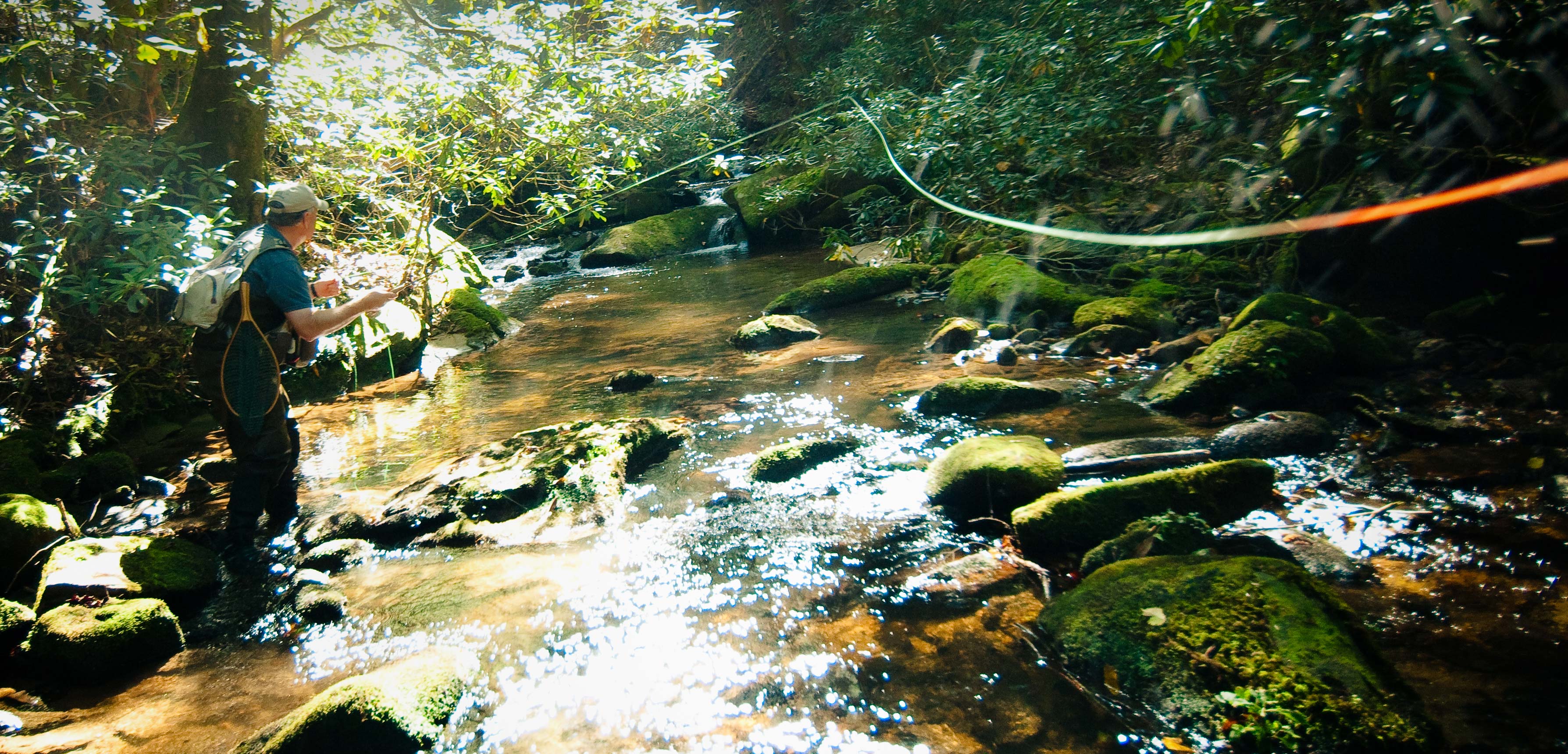
By Jason Tucker
Of all the challenges to small stream fishing (access, obstacles, wary fish, biting insects, hillbillies) casting must rank as the most frustrating aspect of small-stream fishing.
I have coined several swear words you have never heard casting in small streams. It is that frustrating. When you go to small streams you need to bring a double dose of patience. Some days and some places I have simply turned around and walked out rather than suffer a stroke due to the frustration of casting in tight quarters.
Picture this. You have already had a frustrating day. You’ve caught some fish, but also lost some flies to the bushes. You have tied on the last ‘hot fly’ from your box. Quietly you wade up around the bend, moving slowly so as not to push water, because upstream you can hear a good fish feeding. Sure enough, when you round the bend you can see a fifteen-inch trout noisily slurping flies off the surface completely unaware of your presence. It is the biggest fish you’ve seen all day. Problem is, the fish is twenty feet away and you only have an eighteen-inch space between the tag alders to land the fly. You also don’t have much of a backcast due to the brush behind you, so you’re going to have to steeple cast the fly above you but still get it to lay out quietly just in front of the fish.
“You’ve got this” you whisper. You make that steeple cast by flipping the fly out in a tight arc, then pop the rod tip up to the sky, feel the glass rod load, start your forward motion and change the direction of your arm movement forward toward the fish, shoot just a little line for the distance, then just as your loop extends toward the fish, the slightest breeze puffs it into the tag alders high overhead. Seeing this, you yank your rod back in an effort to stop it, only to pop your fly off in the top of the tree. The fish, seeing the commotion, scoots for cover. This is the challenge of casting on small streams. Some days you will spend more time untangling line and flies from the brush than you will fishing.
I can and do make that cast successfully from time to time. A steeple cast in tight quarters is just one skill that is helpful to have on a small stream. My disclaimer that I will now make is that I am no casting instructor. I’ll do my best to describe some of the skills you should cultivate.
Read More »Cool Shots at Bonefish
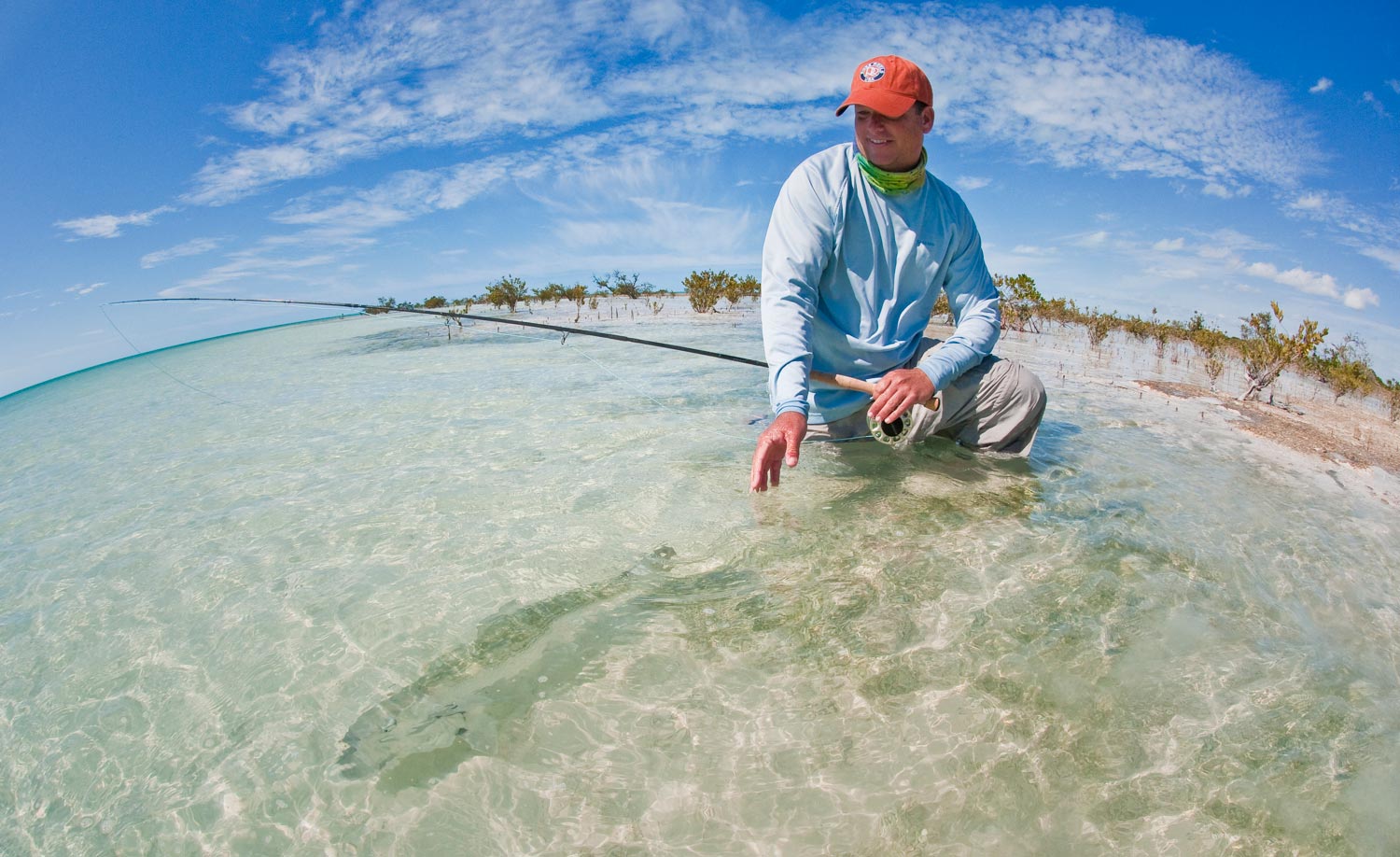
WHAT MAKES A REWARDING BONEFISH TRIP.
It’s hard to fly off to an exotic location for a week of fishing without having a goal, or at least some expectations. The first can be dangerous and the second disastrous. Still, one or the other is generally present on a fishing trip and the more the trip costs, the higher they usually are.
I’ll never forget my first bonefishing trip. My expectations were to actually see a bonefish and my goal was to not make a complete ass of myself when I did. (It’s good to have goals, right?) That trip did so much more than exceed my expectations. It was an awakening of sorts and the beginning of a life long obsession.
On subsequent trips I adjusted my goals. I wanted to catch a lot of bonefish. I wanted to catch big bonefish. I wanted to increase my hookup ratio. I wanted to catch bonefish on my own. I wanted to develop my own fly patterns. Eventually I just wanted quality fishing with good friends. One by one, all of those things went in the done column and I kept going bonefishing.
There’s not a thing on that list that I don’t still enjoy doing. Who doesn’t want to catch a lot of fish, or a big fish, or have a great day with a good friend. With the exception of the friend however, they all become less important with time. Most days all I really need is to stand on the bow and glide across a beautiful flat.
So what makes a day of bonefishing exceptional?
Read More »What Does The Trout See?
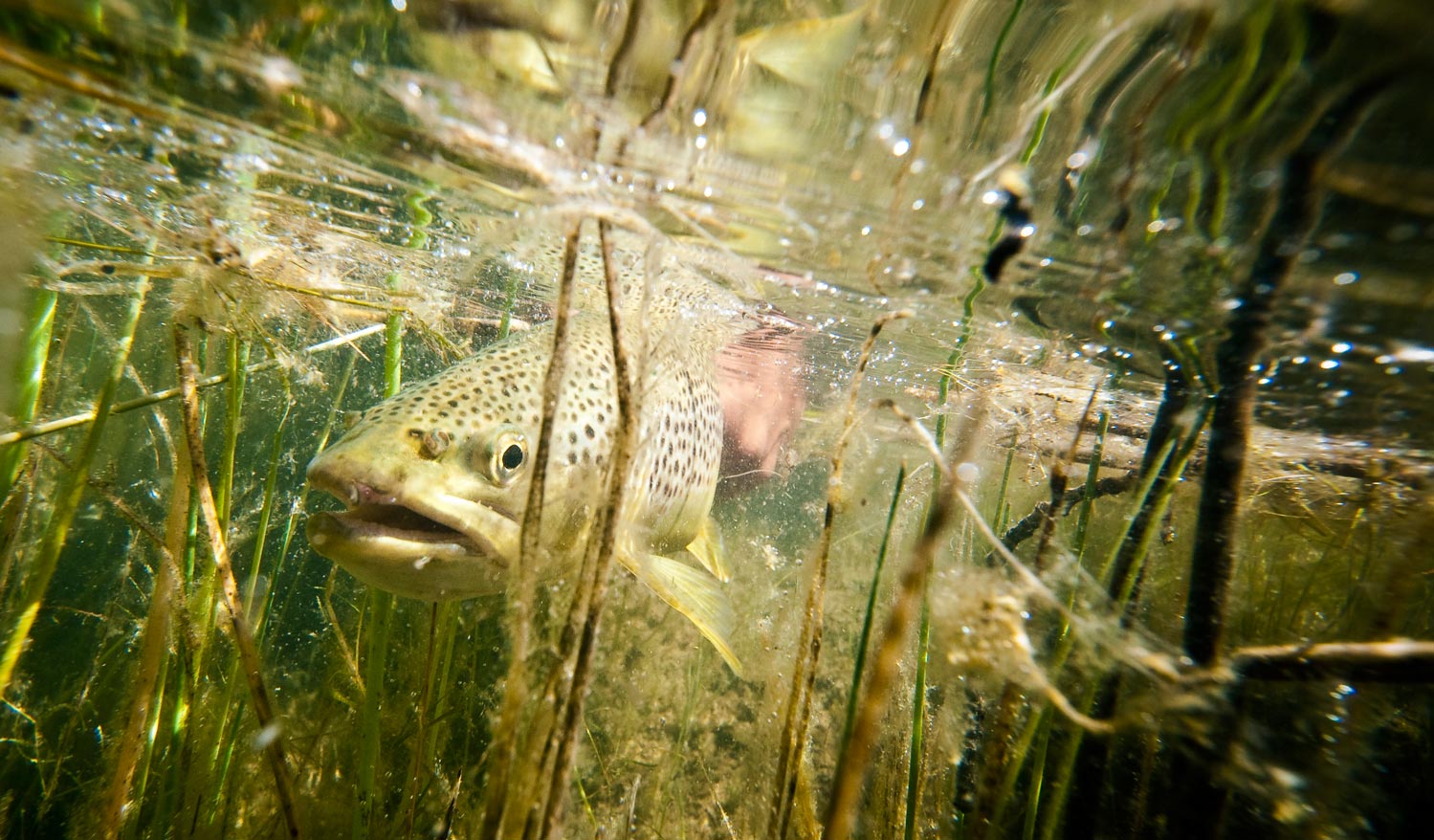
DID YOU EVER WONDER WHY FISH EAT BRIGHT PINK WORM PATTERNS, OR THINGAMABOBBERS FOR THAT MATTER?
Ever watch a trout refuse your dry fly and wonder what he saw that he didn’t like? A trout’s eye serves the same purpose as ours but it functions in a very different way. The subject of how trout see the world is a complicated one but the basics are well worth your time. Understanding how the fish eye works can help you imagine the watery world they see, and it may give you some insight that will help you catch them. The following are some simple principals to keep in mind.
WATER AS A VISUAL MEDIUM
Water is a poor conductor of light at its best. It affects the way fish see color as well as their visual acuity. Water absorbs light at different rates depending on its wavelength or color. Long wavelength light, colors like red and orange, are absorbed quickly while short wavelengths like blue and violet are absorbed more slowly. This means that as light passes through more and more water, warm colors fade to black while cooler colors fade more slowly. Overall, as a fish moves into deeper water his environment becomes darker, at which point the biology of the fish’s eye affects his perception of color as well.
It is not necessary however for a fish to be in deep water for its vision to be affected by the absorption of light. The rules hold true for a fish in shallow water, viewing an object at a distance. A red streamer, for example, that is running at a depth of one foot, where there is plenty of red light, will appear black to a fish viewing it from fifteen feet away. As the fish closes on the fly, however, the red will become vivid. The same would not be true at a depth of fifteen feet. At that depth the fly would remain black to the fish, even at close range.
Ultraviolet light, which we do not see but trout do, is scattered in water. Colors like white and reflective materials like flash are visible to fish at long distances but may appear blurred by this effect. These flies will get a fish’s attention from a distance and become sharper as the fish draws near.
Color perception and visual acuity are both affected by the chemical composition of the water as well as what foreign matter is present. Tea stained water, which is present in many mountain streams, absorbs UV light quickly, changing the rules dramatically. In these conditions warmer colors become more important and while fish may see less color overall their visual acuity will improve. When water is dirty, light is scattered by foreign particles and the fish’s environment becomes darker with little visual acuity.
THE BIOLOGY OF A TROUT’S EYE
The biology of a trout’s eye is similar to ours in some ways and very different in others. Their eye has an iris, a lens and a retina with both cone cells and rod cells, much like our eyes, but
Read More »Why Travel For Great Lakes Carp?
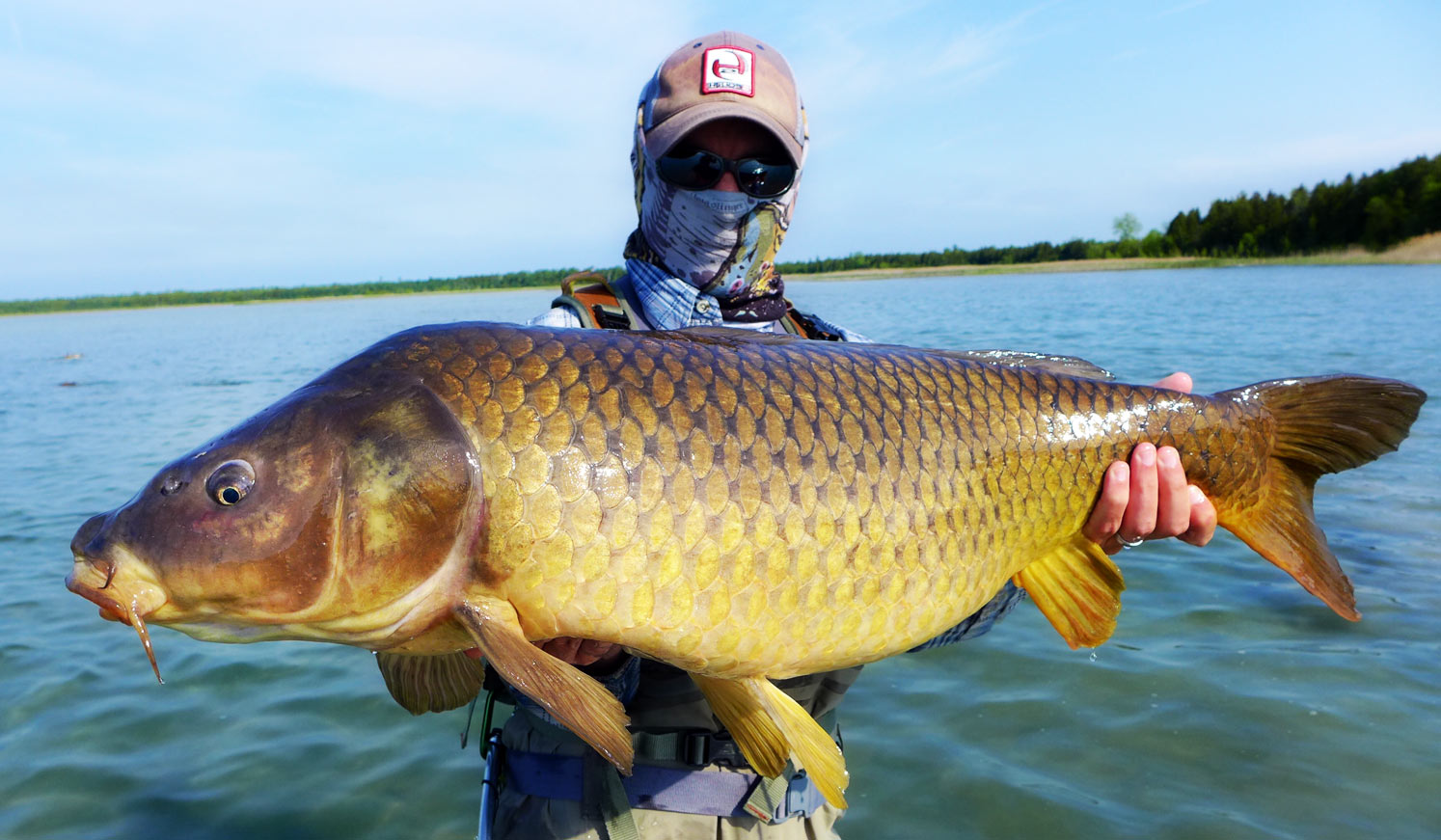
By Jason Tucker
Everyone has a bucket list.
For most of us that includes the Bahamas or a similar destination for bonefish. Carp fishing the flats in the Great Lakes should also be on that list. Why?
Crystal clear water in an other-worldly setting. Once you get out on those flats you’ll forget you’re in the Midwest and swear you’re in the salt. Clear water, gulls and terns, wind and waves, but no insidious salt to wash off at the end of each day.
Sight fishing. Sight fishing clear water to spooky fish is the Grail of flats fisherman. Lake Michigan offers it up in spades, and with hundreds of miles of flats available, you’ll often have them to yourself.
Large numbers of big fish. Occasionally you’ll be casting to strays. Most of the time you’ll have dozens to several hundred fish swimming around you, and the challenge will be to pick one and not spook the rest. Peeling off fish from the edges of the larger group is often the key. Lake Michigan fish average
Read More »Life Is Too Short To Fish In Ugly Places
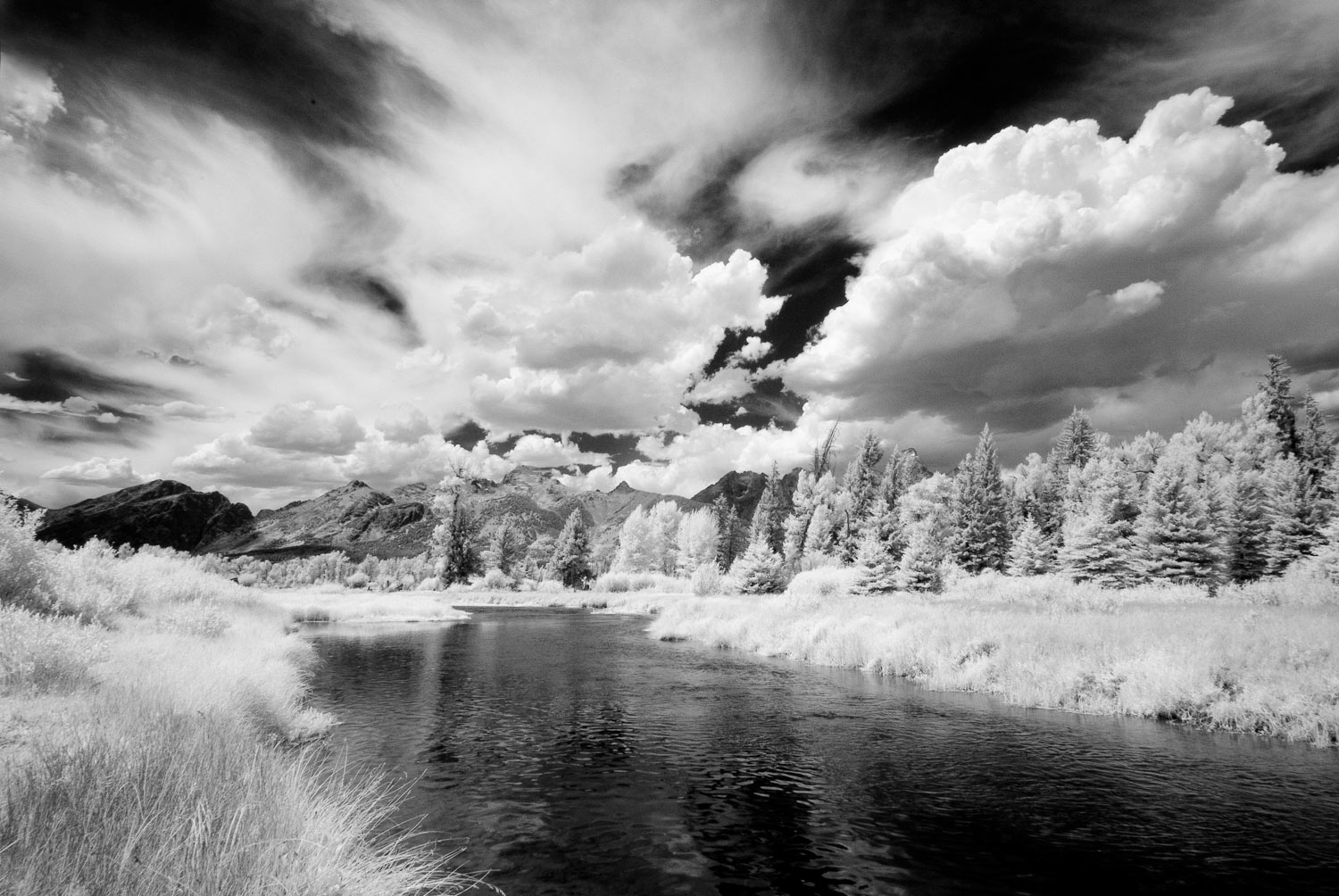
I was recently reminded that the places we fish are as important as the fish we cast for.
I was tagged in a Facebook challenge on nature photography by my buddy Tim Romano. (#challengeonnaturephotography) I don’t think of myself as a nature photographer, but once I started looking through photos the evidence built up quickly.
I floated the Snake River many years ago with a guide from Jackson. As we floated past the Tetons, I tucked my rod under my arm and grabbed the camera for a quick shot.
“Sightseeing trip’s a hell of a lot cheaper,” my guide groused from behind me.
I feel sorry for that dude. I’ve never lived in Jackson, but I can’t picture myself growing tired of looking at those mountains. So, if you’ve been spending too much time staring at a bobber (or dry fly, let’s not start that again!) here a little reminder to look up once in a while.
Here are 8 photos of some beautiful places i’ve fished. Enjoy.
Read More »6 Reasons You Might Catch More Bonefish By Wading
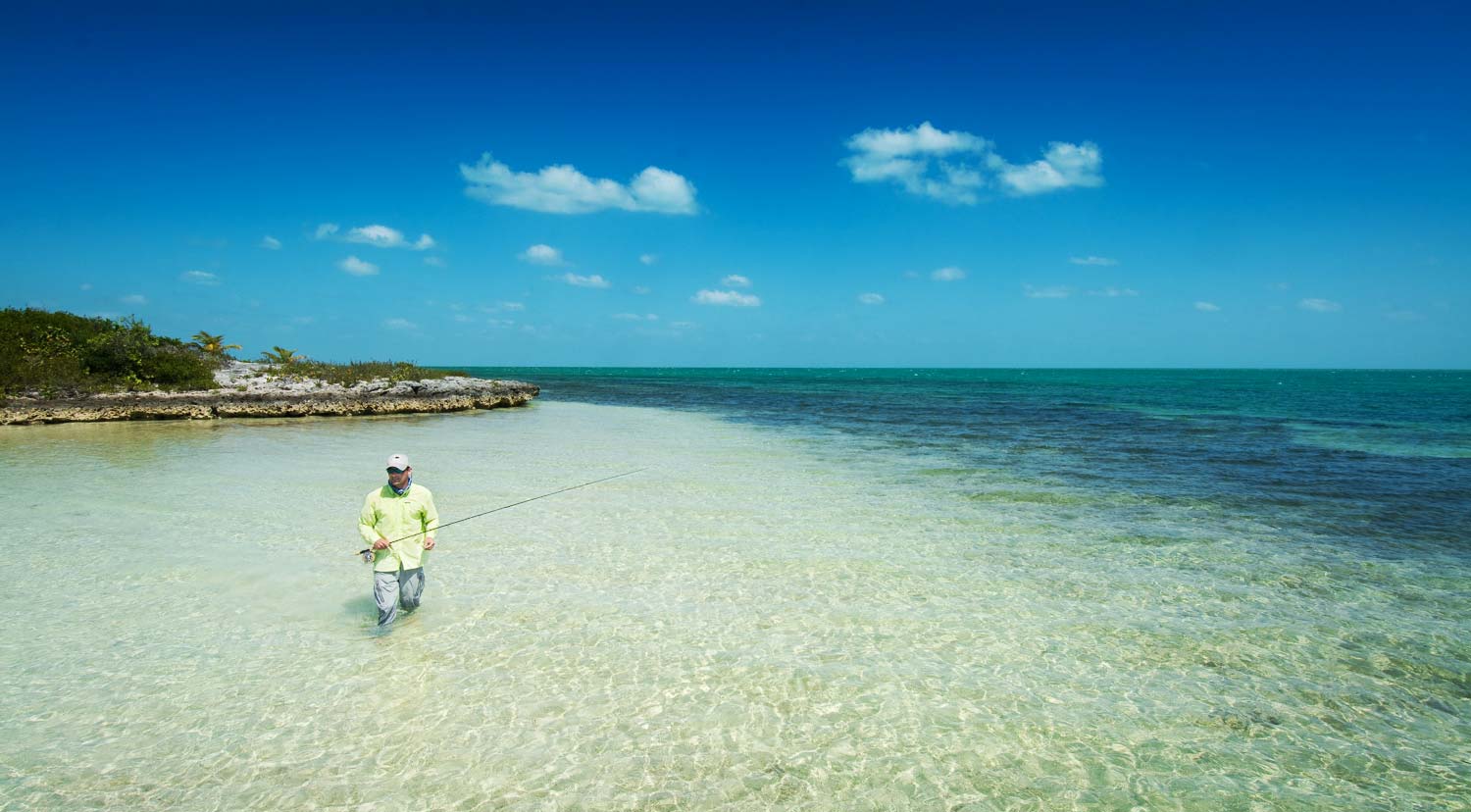
Wading a beautiful sand flat on some tropical island, looking for bonefish is an experience every angler should enjoy.
There’s nothing like wading for bonefish, especially in a remote location where the angler can enjoy breathtaking beauty, solitude and the thrill of casting to un-pressured fish. Wading is not just a cool experience, it’s also productive.
I was talking about bonefishing with Tom Rosenbauer the other day and he made the comment,
“I catch most of my bonefish wading. I just see the fish better.”
That might seem counterintuitive, but I totally agree. While the height the angler gains standing on the boat helps reduce the glare on the water, it also puts the angler in a very different space. I’ve always thought the wade angler was more in touch with the environment and conditions than the boat angler, and therefore more attuned to where the fish are moving. Tom agreed.
This idea stuck in the back of my mind and as the day went on I continued to think of reasons that wading for bonefish is so productive. It’s not the first time I’ve hung up the phone with Tom and sat down to write about the conversation. That should tell you a bit about the man. Anyway, here’s my list of reasons wading for bonefish is so productive.
6 Reasons You Might Catch More Bonefish By Wading
Awareness of your surroundings.
As I mentioned, when you wade you are more aware of things like water movement, contours in the bottom, the consistency of the bottom and the amount of forage. Being in the water puts you in the same space as the fish and you begin to see the cuts and channels they use to travel and the places they might regularly hunt for food. You begin to anticipate their behavior and you find fish because you are looking in the right places.
2. You take your time.
A wading angler covers water more carefully. It’s pretty common, when fishing from a boat, to roll up on a fish and spook it before you even know it’s there. By moving slowly and searching the water methodically the wade angler
Read More »Presenting Your Fly To A School Of Bonefish
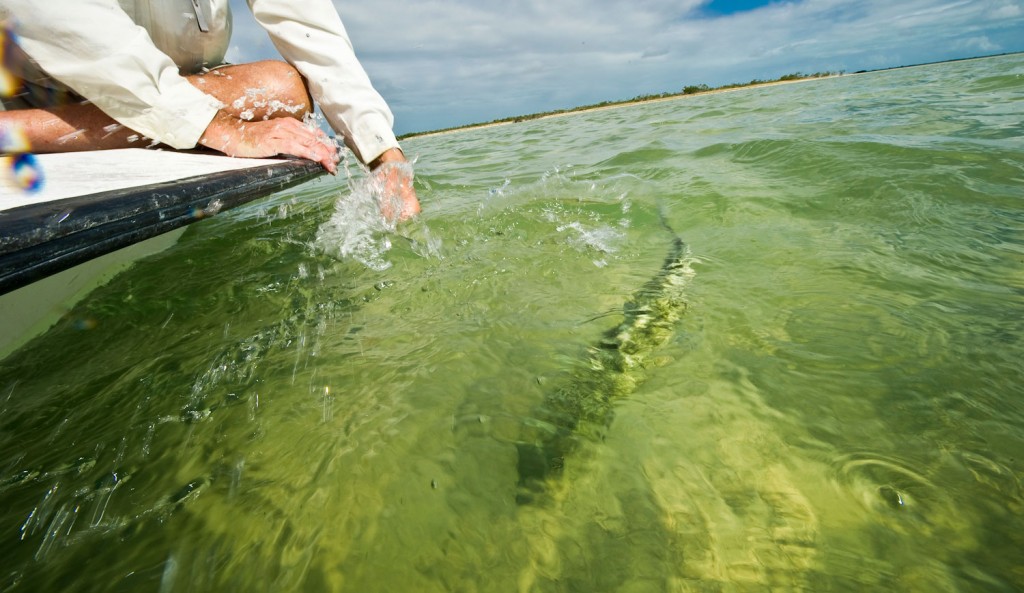
Bonefish are on the move!
Presenting your fly to a school of bonefish has to become second nature. There is often not time to make a plan. The successful angler is one who can make split second decisions and place the fly quickly and accurately.
It’s a little like shooting a shotgun. You have to know how far to lead the fish in a given situation and you have to be able to picture that lead to know where your target is. It’s a skill that takes time to master but hopefully this video will set you off in the right direction.
OUR FRIEND JOEL DICKEY IS BACK IN THIS VIDEO TO HELP YOU SEE YOUR TARGET.
Read More »Slack Free Presentation: Video
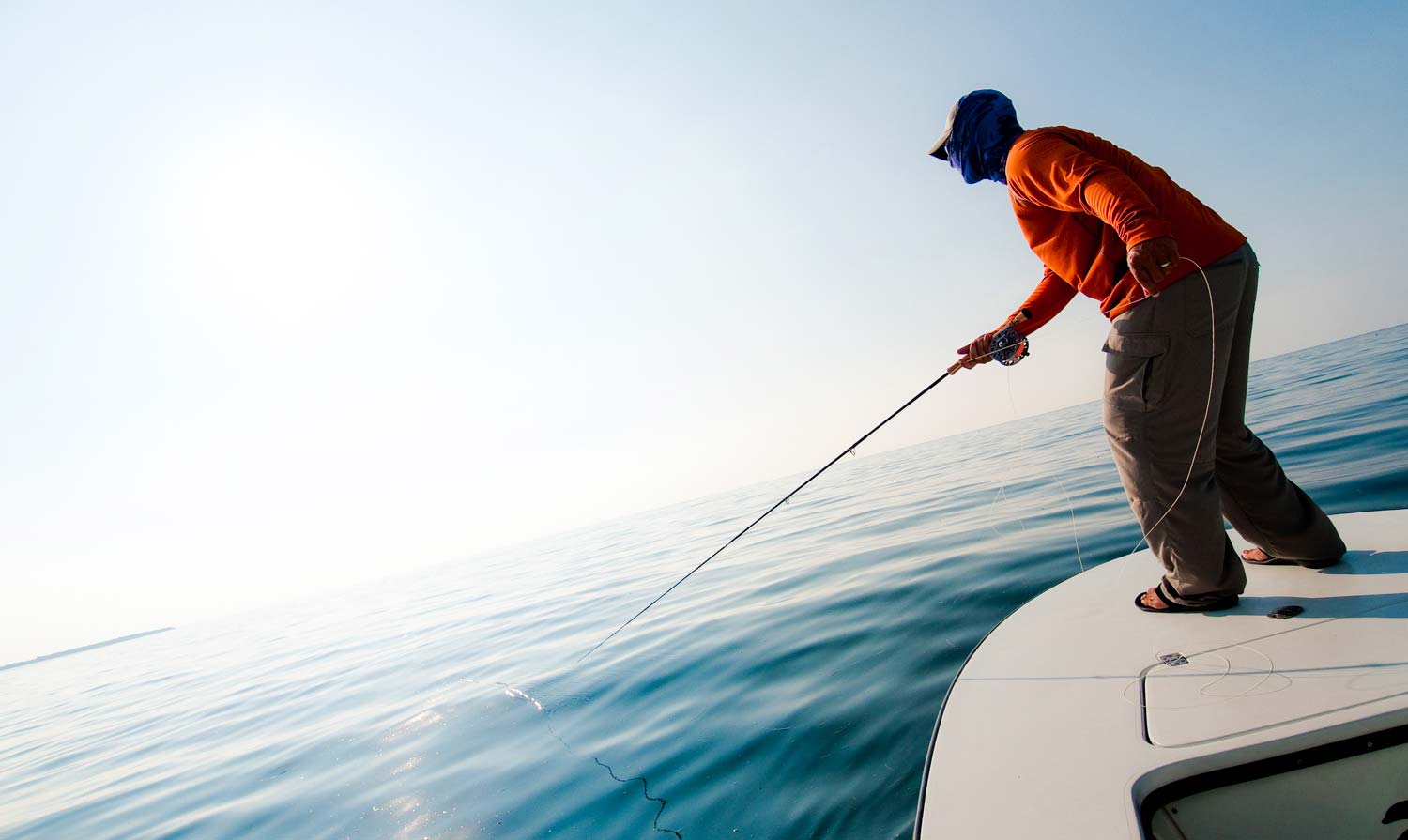
In fly-fishing, slack is always the enemy.
That’s never more true than when you are fly fishing on saltwater flats. Slack, however, is an ever present fact of life. No matter how good a caster or angler you are there are conditions beyond your control which can introduce slack into the system. Anglers who are successful are the ones who learn to regulate that unwanted slack.
There are a couple of easy techniques you can incorporate on every presentation which ensure that you will always be tight to your fly and fishing at your best. These simple tricks quickly become muscle memory and are done without thinking. A little practice is all it takes.
Watch this video where Bruce Chard explains how to easily make slack free presentations.
Read More »A Guide To Fly Rod Guides
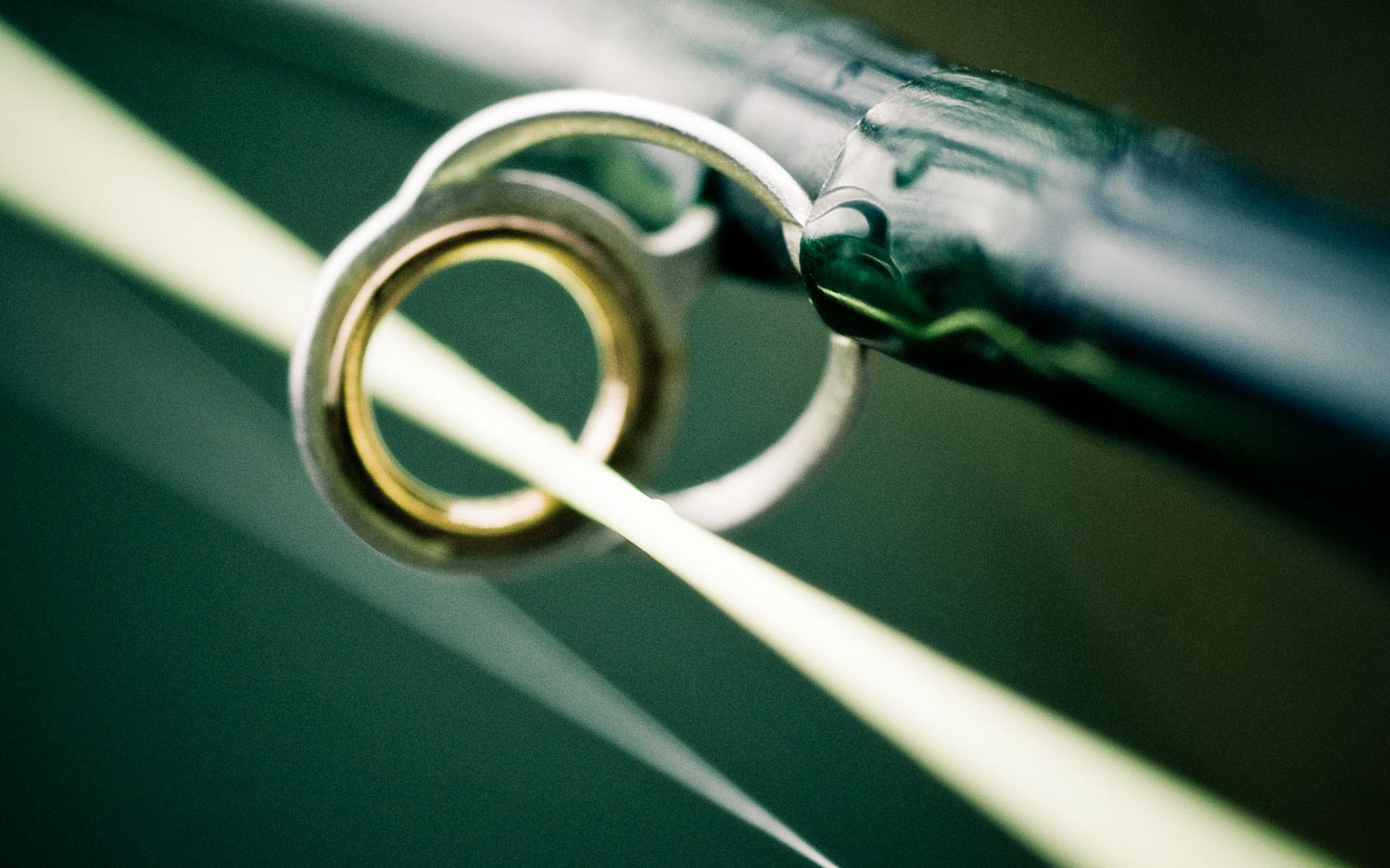
By Louis Cahill
The guides on your fly rod have a lot to do with how it performs.
I was building bamboo fly rods and making my own guides when I first became aware of the many guide options and their effect on fly rod performance. Up to that point I think I took rod guides for granted, as I think many anglers do. Rod designers spend a good bit of time on guides and their placement and while you can cast a rod and catch fish with just about any guides, they have a real impact on how the rod performs.
Guides serve two basic functions. They transition the fly line from its unorganized state into a controlled state during the cast. The guides also serve to distribute the force applied to the line along the blank, during both the cast and the fighting of fish. All fly rods, with the notable exception of tenkara rods, have three types of guides. Each of these guides is designed for a specific purpose and the parameters of that design effect how the rod performs.
Three types of guides
Stripping guides are the large guides found closest to the reel. They are usually constructed with a large ring, often having some type of insert, soldered into a sturdy base. These guides are designed to handle the energy of the stiff butt section of the fly rod. Saltwater rods usually have two stripping guides to match their powerful blanks and deliver maximum pressure during the fight. The inserts found in stripping guides are designed to reduce friction, as the line is often coming across these guides at an acute angle. They are most often a polished ceramic but materials vary, including agate and colored glass in some high end rods. It’s never a good idea to hook your fly in these inserts and it can cause them to crack, reducing their performance and damaging your fly line.
Snake guides are, most often, the twisted wire guides that are most numerous on your fly rod. These simple but effective guides are designed to distribute force along the rod blank without adding a lot of weight or catching line. They are generally made of stainless steel or titanium. Some rods have single foot guides rather than traditional twisted guides. These guides are lighter weight and produce a faster action in an ultra-light carbon fiber rod. It’s not much weight, but with today’s carbon fiber, there is a difference. The down side to these guides is that they are not as sturdy and can catch loops of line. It’s unlikely that this will happen during casting but can happen in the excitement following a hook up. If you are producing loops inside your guides while casting, you have bigger problems. See a casting instructor.
Tip-tops are the guides fitted to the tip of the rod. It’s easy to take these little guides for granted but they are especially important. They add weight and transfer force at the most delicate part of the rod. This means that if there is a problem with the tip-top, it’s very unforgiving.
Guide size
The most influential aspect of guides, at least on casting performance, is their size. A larger guide will
Read More »Keep Your Rod Tip Off the Water for Longer Drag-Free Drifts
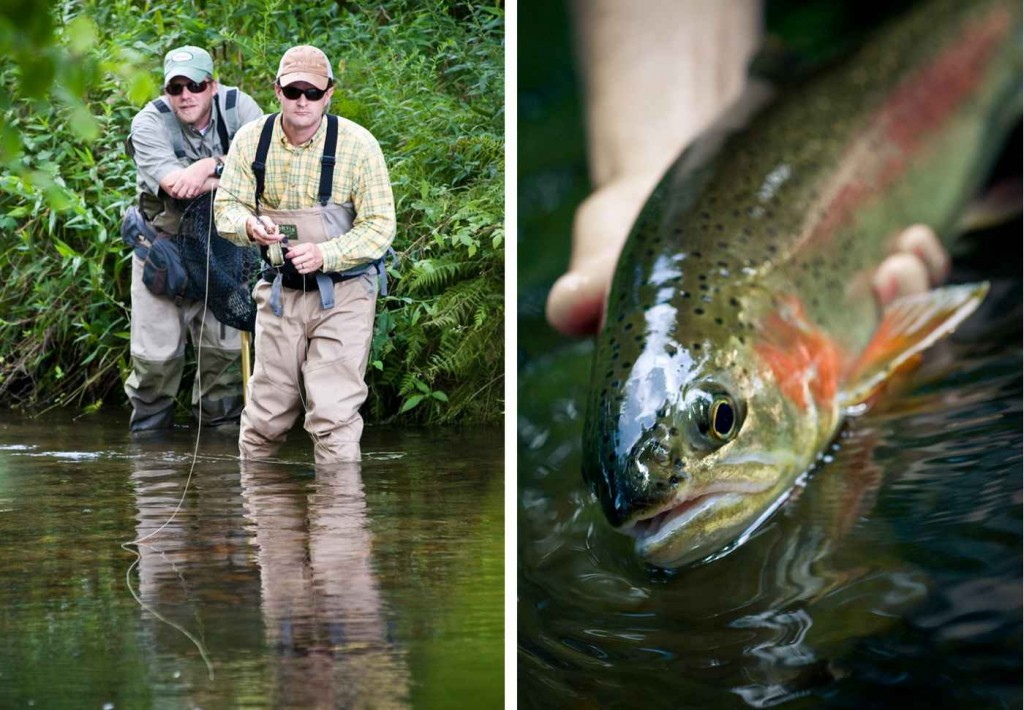
Are you finding yourself struggling to get long drag-free drifts on the water?
If the answer is yes, you may be holding your rod tip too close to the water during your drifts. When your rod tip is positioned too low, you’re putting unnecessary fly line on the water that you in turn have to manage in order to maintain a drag-free drift. As soon as this unwanted fly line hits the waters surface, it’s immediately subjected to the surrounding currents. Depending on how fast the current is at your feet, the less time it will take for it to be pulled downstream and begin effecting your drift. Eventually all the slack will be pulled out in your fly line and your drag-free drift will be compromised. There’s of course a happy medium though, on rod tip position. Too high, and anglers will find it difficult to effectively mend and set the hook. I generally tell my clients to keep their rod tip at least three feet off the water’s surface.
Here’s a simple drill to help you understand and visualize how improper rod tip position on the water can negatively effect and decrease the length of your drag-free drift. Lay out a nice 30+ foot cast on the water. Make sure you stop your rod tip high above the water (a good 4 feet). Watch your drift for a few seconds, and then
Read More »